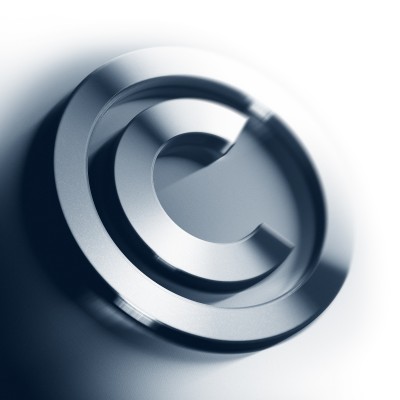

Enlightened Audio Education
Lesson 25
Copyright basics – Understanding the law and protecting your recordings
The following information represents the opinions of the author and should not be considered legal advice. If you have a particular concern relating to copyright law or matters of copyright infringement, please seek professional legal counsel.

Copyright law – it’s simpler than you might think
“Copyright law”. For most of us, those two words are as dreary as they are misunderstood. In truth, the basics of copyright law are pretty easy to understand, so don’t skip this lesson just because the subject matter isn’t all that exciting. I promise to keep things brief and straightforward, so please dive in, at least this one time.
How to copyright your recordings
When you start to release recordings, it’s an entirely natural impulse to want to protect them from illegal copying and distribution. So what must you do to ensure that your work is properly copyrighted?
It might surprise you to know that once your recording is complete, it’s automatically covered by international copyright law!
What this means is that the moment you finish creating your recording, it is, from a legal perspective, an original work to which you own the copyright. It is therefore illegal for anyone to copy or distribute it without your permission.
The following Wikipedia articles will prove useful if you’d like to explore this subject in more detail.
https://en.wikipedia.org/wiki/Copyright
https://en.wikipedia.org/wiki/Berne_Convention
Copyright registration
Many people mistakenly believe that their recording will not be protected unless they pay to register it with a government service that manages copyrights. This is not the case.
In accordance with The Berne Convention, copyright protection is automatic under international law and need not be obtained through registration with any government office.
In fact, in many countries, there is no registration system for copyright.
However, some countries provide additional benefits to those who register their recordings. For example, in the USA, registering will allow you to sue for damages and legal fees if someone commits copyright infringement with your recordings.
For more information about copyright registration in your country, please refer to the following Wikipedia article:
https://en.wikipedia.org/wiki/Copyright_registration
The simple truth is this: When you create something original, you own it, and no one can take that away from you. However, it is advisable that you take the following steps to deter infringement and to ensure that you can effectively claim ownership of any recording that you create.
- Keep evidence of the development of your recording
In the unlikely event that you ever need to prove that you own the copyright to your recording, it helps to have some evidence that you created it. Save any materials that you created during the development of your recording. For example, a copy of the voiceover script you wrote would serve as evidence. Even something as simple as the receipt for the royalty free background music you used in your recording would serve as additional evidence. - Deter infringement
In the past, in order to protect your copyright, it was necessary to publish a copyright notification on your recordings, for example: © 2021 Christopher Lloyd Clarke. All Rights Reserved.This is no longer the case. Adding copyright symbols or notifications is not required in order to receive copyright protection. You are absolutely protected from the moment you create your recording.
However, even though copyright notifications are not required, I still think it’s a good idea to publish them, simply because they help to make people aware that your work is copyrighted. Many people don’t really understand what is copyrighted and what isn’t. Some people even think that anything and everything they find on the internet is theirs to use and distribute however they wish!
It’s worth mentioning that copyright notifications like these, while important, are not going to completely prevent copyright infringement from taking place. Which leads us to…
Copyright infringement – how and where it happens
The sad truth is that we live in a world where copyright infringement is so commonplace that, even though it is a punishable crime, a significant percentage of the population engage in it at one time or another.
In the past, one of the most common forms of copyright infringement was peer-to-peer file sharing in which one person uploads a copy of your recording so that others can access it via the internet. According to the Recording Industry Association of America:
“Since peer-to-peer file-sharing site Napster emerged in 1999, music sales in the U.S. have dropped 53 percent, from $14.6 billion to $7 billion in 2013.
If that wasn’t bad enough, this is the statistic that really shocked me…
“Only 37 percent of music acquired by U.S. consumers in 2009 was paid for.”
Wow. We sure were a bit of a naughty society, weren’t we? The good news is that illegal file sharing has been on the decline for some time. A study conducted by YouGov in the UK in 2018 revealed that only 10% of people in Britain download musical illegally, down from 18% back in 2013.
One of the primary reasons for this decline is the fact that music streaming services have taken over from digital downloads as the main way that people consume audio. This was discussed in more detail in a previous lesson: CDs vs digital downloads vs streaming. Which formats are right for you?
As you may already know, if you are subscribed to a music streaming service, then you have access to every album that your streaming service has to offer. This totality of access makes it unnecessary for users of streaming services to obtain copies of your recording illegally.
However, while illegal file sharing has decreased in prevalence, other forms of copyright infringement may have increased. Here are some examples of ways that your recording might be used or distributed without your permission:
- Someone may upload your recording to YouTube or another video streaming platform. This is one of the most common forms of copyright infringement I see today.
- Someone may broadcast your recording during a livestream on Facebook or other social media platform.
- Someone may use your recording in their business, for example, broadcasting it during online events or in-person conferences.
Don’t use Content ID or Sync Licensing Protection
At this point I must repeat a warning from a previous lesson…
If and when you use a distributor to publish your recording on various streaming services, this distributor may offer a service called “Sync Licensing” or “Content ID Matching”.
This service scans the internet, searching for any unauthorised uses of your recordings and then automatically initiates copyright claims upon them.
This might sound like a good thing, but Sync Licensing and Content ID Matching are services that should only be used by bands or musicians that release original music. It should never be used by people who create spoken-word recordings, unless your recording contains unique background music that was composed exclusively for you and you alone.
When you go through the process of uploading your recording to a distributor, keep your eyes peeled for any mention of these services. Avoid them. Disable them. Untick any boxes that offer them!
Unfortunately, I have found that the inadvertent use of Sync Licensing and Content ID Matching is something that creators of hypnosis and meditation recordings do all too often. I can’t stress enough how important it is to avoid these services. If you use Sync Licensing or Content ID Matching, whether intentionally or not, you may cause other people to receive false copyright claims on their recordings if they have used the same background music as you.
For a full explanation of how this happens please refer to this supplemental lesson:
https://enlightenedaudio.com/publish-your-recording-responsibly-to-prevent-false-copyright-claims/
What can you do to prevent copyright infringement?
The truthful answer is, not much.
I realise that at first this might seem disheartening. After all, you’ve gone to the trouble of creating wonderful meditation or hypnosis recordings that you’re proud of and you’ve spent your valuable time and money in the process. No one likes the idea of their work being distributed illegally and you are well within your rights to expect everyone who acquires your recording to pay a fair price for it.
But the fact of the matter is, your recording, like every other media production in this world, including music, video, film and e-books, is bound to be subjected to some degree of illegal use.
My advice is that you make your peace with this but be sure to act accordingly in any instance when you discover illegal use of your recordings. In other words, don’t expend huge amounts of time or energy trawling the internet trying to uncover cases of copyright infringement, but be sure to address it if you do find it. For example, if you discover an infringing YouTube video, you can easily lodge a copyright claim on that video in order to have it taken down.
For more serious cases of infringement, for example, if widespread distribution is taking place for commercial gain, I recommend consulting with a legal expert.
Conclusions
DO keep records that help to prove you are the copyright owner of your recordings.
DON’T waste any of your precious time or energy worrying about copyright infringement, but…
DO take action whenever you find it.




